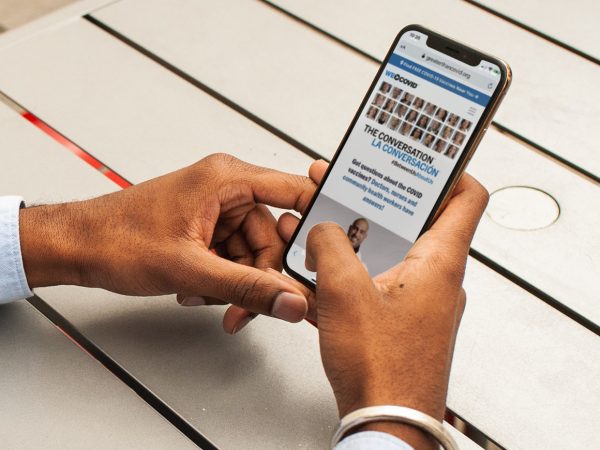
An expansive FAQ video series from KFF to dispel myths and provide facts about the COVID-19 vaccines that ran from March 2021 thru December 2022.
Launched as the COVID vaccines were first becoming available, the campaign, which was co-created with Rhea Boyd, MD, MPH, a pediatrician and public health advocate, responded to information needs in disproportionately affected communities.
THE CONVERSATION: Between Us, About Us featured 32 healthcare workers of color who appeared in more than 350 explainer videos in English and Spanish.
At the time it concluded, the campaign had been viewed more than 220 million times.
Messaging focusing on Black and Latino populations was presented with the Black Coalition Against COVID and UnidosUS. A series for parents and caregivers about the COVID-19 vaccine and children was released with the American Academy of Pediatrics.
The California Health Care Foundation, California Community Foundation, California Endowment, Commonwealth Fund, Sierra Health Foundation and Walgreens provided generous funding for the development and dissemination of the campaign.
Google/YouTube, Meta (Facebook, Instagram), Twitter and Pinterest increased visibility for the videos as part of efforts to amplify trusted voices on COVID, including both direct and donated support.
Jacob Kornbluth Productions worked with KFF to produce the videos.
Trusted Messengers
Trusted Messengers
Doctors, nurses, midwives, promotoras (community health workers), epidemiologists and researchers representing diverse backgrounds and expertise were featured in THE CONVERSATION.
Accurate, Accessible Information.
More than 350 videos addressed common questions about the COVID vaccines from safety and efficacy to access and cost. The series also countered misinformation.
Get vaccinated. It’s safe and effective.
The latest COVID vaccines have been updated for the 2023-2024 season. The CDC recommends everyone 6 months+ get the new annual vaccine.
Getting vaccinated is the safest way to protect against the serious effects of COVID.
Find vaccines near you Get the latest on COVID

